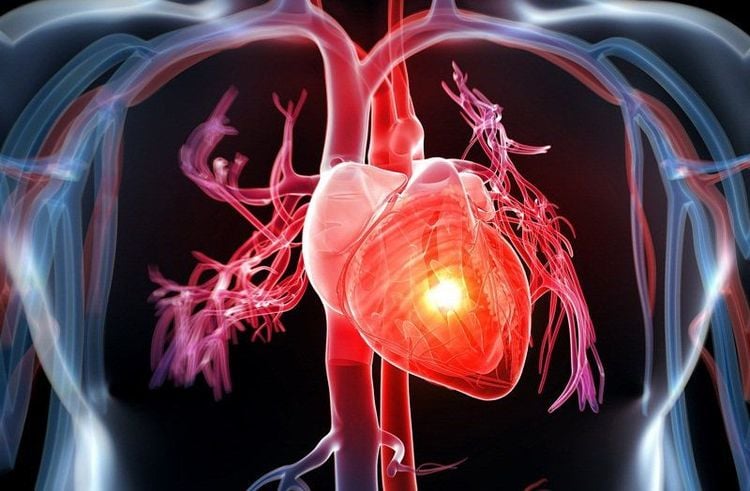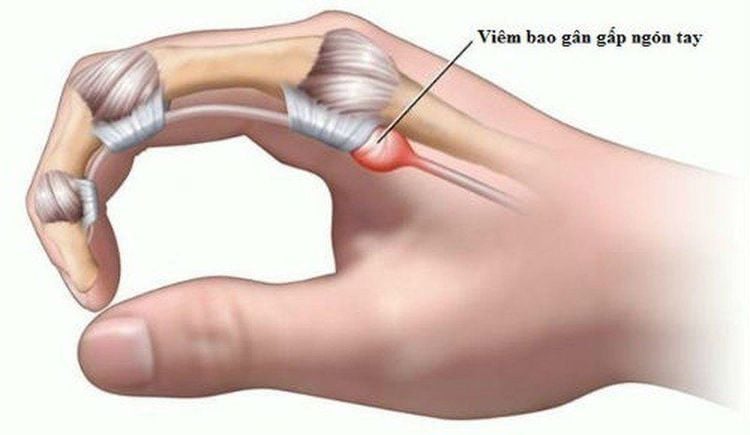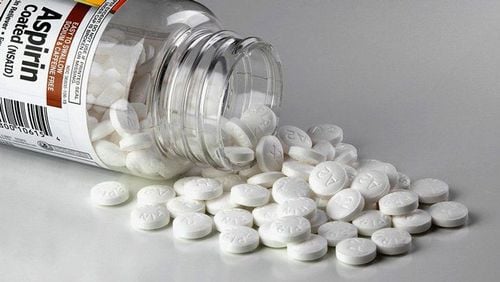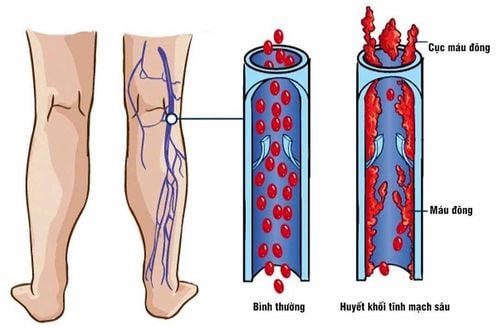This is an automatically translated article.
Diabetes has the potential to lead to many dangerous complications if not well controlled blood sugar. There are acute complications that require urgent treatment such as hypoglycemia and ketoacidosis, but there are also long-term complications such as damage to the eyes, kidneys, heart, skin, nerves and tendons.1. Complications of diabetes
Diabetics must regularly monitor and regulate blood sugar levels. However, no matter how careful you are, there is a possibility of complications.There are 2 types of complications of diabetes that you may experience including:
Acute complications: Acute complications that require emergency care such as hypoglycemia and ketoacidosis. If left untreated, these conditions can cause serious problems such as: Seizures; Loss of consciousness; Dead. Chronic Complications: Chronic complications occur when diabetes is not managed properly, causing blood sugar levels to rise. If diabetes is not well controlled, over time high blood sugar can damage various organs, including: Eyes; Kidney; Heart; Skin; Nerve damage; Tendon damage. Chronic complications of diabetes develop gradually. The longer you have had diabetes and the less controlled your blood sugar, the higher your risk of complications.
Complications of diabetes can be disabling or even life-threatening. Complications of diabetes include:
Cardiovascular disease : Diabetes greatly increases the risk of various cardiovascular problems, including coronary artery disease with angina, stroke, heart attack and narrowing. arteries (atherosclerosis). If you have diabetes, you are more likely to have heart disease or stroke than the average person.

Bệnh tiểu đường làm tăng đáng kể nguy cơ mắc các vấn đề tim mạch khác nhau

Bệnh tiểu đường type 2 có thể làm tăng nguy cơ sa sút trí tuệ, chẳng hạn như bệnh Alzheimer
2. How does diabetes damage your tendons?
If you have diabetes and you have pain when moving, it could be because your tendon is bad. Tendons are like ropes that connect your muscles to your bones. High blood glucose levels can play a role in the formation of your tendon problems.Tendons are present all over your body, including in your shoulders, arms, wrists, hips, knees and ankles, etc. They work to transfer force from muscles to bones so you can move. move, move. If your diabetes isn't controlled, your tendons can thicken and tear easily.
Tendon damage in type 1 and type 2 diabetes occurs due to substances called advanced glycation end products (AGEs). They form when protein or fat combines with your blood sugar.
Normally, your body makes AGEs at a slow and steady rate. But when you have diabetes, increased blood sugar increases the rate at which AGEs are produced, which in turn affects your tendons.
Tendons are made of a protein called collagen. AGEs form a bond with it that can change the structure of tendons and affect how well they function. The tendon may be thicker than usual and not be able to hold as much weight as it used to. As a result, your odds of tearing one of your tendons increase.
Some tendon problems you can get if your diabetes is not well controlled are:
Frozen shoulder: Stiffness and pain occurs when the surrounding tendon and ligaments in your joint thicken. . This makes it difficult to move your shoulder. Ligament tear: Injury to the tendons and muscles surrounding the shoulder joint, including the sternocleidomastoid muscle. Spring Fingers: Your fingers get stuck in a bent and straightened position after a snap, like the sound of a trigger pull. Carpal tunnel syndrome: You experience numbness, tingling, and weakness in your wrist from pressure on the nerve that runs through it. Dupuytren's contracture: The subcutaneous tissue of your hand tightens causing your fingers to bend toward the palm. Tendon damage is painful and can interfere with your joint's ability to move. Even if you have surgery to repair the damage, the tendon can still tear again. Studies show that more than a third of people with diabetes who have surgery to repair a torn tendon will experience the problem again.

Ngón tay lò xo là tình trạng tổn thương gân có thể gặp
3. How does diabetic tendon damage affect your health?
Exercise is one of the key ways to help manage diabetes, but you may find it more difficult to exercise when your tendons are sore and stiff.Injury to the Achilles tendon at the back of your heel can affect your ankle mobility. This limited movement forces you to put extra pressure on the midfoot with each step, which increases your risk of foot sores.
Talk to your doctor about ways to make sure your blood sugar stays within the normal range while you recover from tendon problems.
4. How to Prevent and Treat Diabetic Tendon Damage
The best way to avoid tendon problems is to keep your diabetes under control. Lower your blood sugar with a combination of proper diet, regular exercise, and medication. If you are overweight, try to lose a few pounds, it will improve your health and at the same time reduce the pressure on the tendons.If you have damaged tendons, ask your doctor about treatments such as these:
Pain relievers such as aspirin or ibuprofen; Muscle relaxants; Physical therapy and exercise; Heat treatments; A splint to keep your joint stable while your tendon heals. Your doctor may also recommend steroid injections into the joint to reduce tendon problems. Remember that steroids can cause your blood sugar to spike in the short term. Ask your doctor if the benefits of this treatment outweigh the risks.

Trong trường hợp bạn đã bị tôn thương gân, bác sĩ có thể kê cho bạn thuốc giảm đau như aspirin hoặc ibuprofen
Using the screening package for diabetes and dyslipidemia at Vinmec, customers will receive:
Endocrine CK examination (with appointment) Total urinalysis (by automatic machine) Quantitative Glucose Quantitative HbA1c Quantitative Uric Acid Quantification of Cholesterol Determination of HDL-C (High density lipoprotein Cholesterol) Determination of LDL-C (Low density lipoprotein Cholesterol) Determination of Triglycerides Determination of Urea Determination of Creatinine Measurement of AST Activity (GOT) Measurement of ALT Activity (GPT) Measurement of GGT activity (Gama glutamyl Transferase) Quantification of MAU (Micro Albumin Arine) Echocardiography, transthoracic pericardium, Normal ECG, Carotid Doppler ultrasound, Transcranial Doppler (carotid) Arterial Doppler ultrasound, Lower extremity veins (Bilateral lower extremity arteries) If you need consultation and examination at Hospitals of the National Health System, please book an appointment on the website for service.
Please dial HOTLINE for more information or register for an appointment HERE. Download MyVinmec app to make appointments faster and to manage your bookings easily.
References: webmd.com, mayoclinic.org, healthline.com












